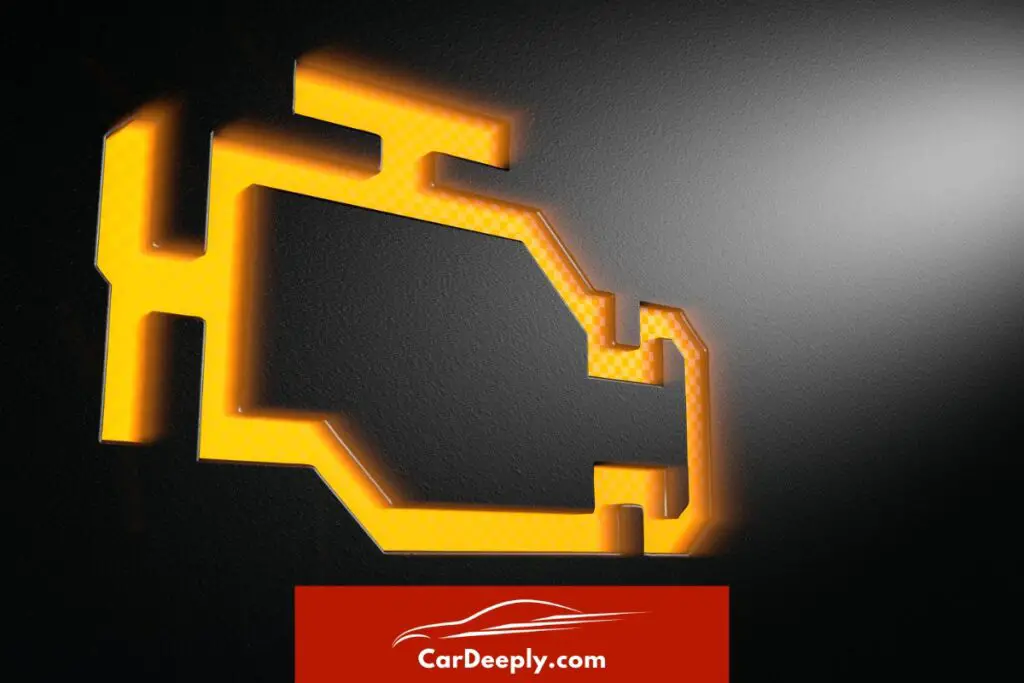Resetting your check engine light without tools is simpler than you think. As an automotive expert, I’ve helped countless car owners tackle this issue, and now I’m here to guide you.
In this article, you’ll discover:
- The foolproof disconnecting battery method
- The driving cycle technique to naturally reset the light
- How to prevent the light from coming back on
So, buckle up and get ready to dive into DIY car maintenance. You’re about to save time, avoid common pitfalls, and gain the confidence to handle this task independently.
Let’s get started!
Advertising links are marked with *. We receive a small commission on sales, nothing changes for you.
Key Takeaways

- The check engine light is a part of your car’s onboard diagnostic system.
- It illuminates when there’s an issue with your vehicle’s engine or emission control system.
- Ignoring the check engine light can lead to serious, costly repairs.
- You can reset the check engine light without tools using several methods (we’ll tell you all of them!).
- If the light comes back on after resetting, it’s time to consult a professional.
What is a Check Engine Light?
The check engine light, also known as the service engine soon light, is a part of your car’s onboard diagnostic (OBD) system.
This little light on your dashboard is a messenger, a beacon that signals when something is off with your vehicle’s engine or emission control system. It’s not just a light; it’s a communication tool between you and your car.
Why Does the Check Engine Light Come On?
The check engine light can illuminate for a variety of reasons. It could be as simple as a loose gas cap or as serious as a malfunctioning catalytic converter.
When your car’s computer detects an issue that could affect the vehicle’s performance or emissions, it triggers the check engine light.
This is your car’s way of saying, “Hey, something’s not right here. You should check this out.”
The Importance of Addressing the Check Engine Light
Ignoring the check engine light can lead to serious issues down the road. Sure, it might be a minor problem now, but leaving it unchecked could cause it to escalate into a major, costly repair.
Plus, a lit check engine light means your car is not performing well and could emit more pollutants than the law allows.
Addressing the check engine light promptly keeps your car in good health and contributes to a cleaner environment. It’s a win-win situation. So, the next time you see that little light on your dashboard, don’t ignore it. Take action. And the good news?
You can often reset this light without any fancy tools. Let’s dive into how you can do this in the next section.
#1: Battery Disconnection Technique
Disconnecting the battery is a straightforward method to reset your check engine light. But remember, safety first! Before starting, ensure your car is off and parked on a level surface.
Step-by-Step Guide
- Locate the battery: Open your car’s hood and find the battery. It’s usually towards the front of the vehicle, with two cables attached.
- Disconnect the negative terminal: The battery has a positive terminal (usually marked with a plus sign and red) and a negative terminal (marked with a minus sign and black). Always disconnect the negative terminal first to avoid any electrical shorts. Loosen the nut on the negative terminal with a wrench, then pull the connector off.
- Wait: Leave the battery disconnected for about 15 minutes. This allows the car’s computer to reset fully.
- Reconnect the battery: Reattach the negative terminal and tighten the nut. Make sure the connection is secure.
Start your car. The check engine light should be off. If it comes back on, a persistent issue might need addressing.
#2: Turning the Ignition On and Off
This method, also known as the ignition cycle, can reset the check engine light in some vehicles. Here’s how to do it:
- Turn the ignition on. Without starting the engine, turn your key in the ignition to the ‘On’ position.
- Wait: Leave the ignition on for a few seconds.
- Turn the ignition off: Turn the key back to the ‘Off’ position.
- Repeat: Do this process three times in quick succession.
Start your car. If the check engine light doesn’t turn on, you’ve successfully reset it.
#3: Letting it Go Off by Itself
Sometimes, the simplest solution is to turn the check engine light off. If the issue that triggered the light is no longer present, the light should go off after a few driving cycles.
A driving cycle varies by vehicle but usually involves driving at various speeds and conditions for a certain time or distance.
#4: Pulling Off the Fuse and Putting It Back
Another method to reset the check engine light involves the fuse box. Here’s how:
- Locate the fuse box: It is usually under the dashboard on the driver’s side but can also be in the engine compartment.
- Find the right fuse: Look for the fuse that controls the car’s computer or the electronic control unit (ECU). Your car’s manual can help you find it.
- Remove the fuse: Carefully pull the fuse out. Wait for about 15 minutes.
- Replace the fuse: Put the fuse back in its slot.
Start your car. If the check engine light is off, you’ve successfully reset it.
What to Do If the Check Engine Light Returns
If the check engine light comes back on after you’ve tried these methods, it’s time to take your car to a professional. A persistent check engine light is a sign of a more serious issue that needs to be addressed. Please don’t ignore it. Your car’s health and your safety are worth it.
Frequently Asked Questions
Can I drive with the check engine light on, damaging my car?
Yes, it can. The check engine light warns that your vehicle’s engine or emission control system is off. Ignoring it can lead to more serious, costly repairs down the line. It’s best to address the issue immediately to keep your car healthy.
How many driving cycles does the check engine light take to turn off?
The number of driving cycles for the check engine light to turn off can vary. It usually involves driving at various speeds and conditions for a certain amount of time or distance. If the issue that triggered the light is no longer present, the light should go off after a few driving cycles.
What are some common issues that trigger the check engine light?
Common issues that trigger the check engine light include:
– A loose gas cap.
– A malfunctioning oxygen sensor.
– A bad catalytic converter.
– A faulty mass airflow sensor.
However, there are many potential causes, and a professional should check your vehicle to see if the light comes on.
Can I use these methods to reset other warning lights on my dashboard?
These methods are specifically for the check engine light. Other warning lights on your dashboard, like the oil pressure light or the temperature warning light, have different reset procedures. Refer to your vehicle’s manual or consult a professional for these issues.
What is an OBD2 scanner, and do I need one to reset the check engine light?
An OBD2 scanner is a device that can read the error codes from your car’s onboard diagnostic system. While it can be a helpful tool in understanding why the check engine light is on, you don’t necessarily need one to reset the light. The methods outlined in this article can help you reset the check engine light without using tools.

Sebastian loves convertibles and drove a BMW 335i for a long time (325 hp is just a dream). Today, with two children, he is more concerned with SUVs and family-friendly vehicles. In addition to an Audi A4 Avant, he also drives a Cupra Formentor VZ – even as a family man, you can’t do without speed. Get to know Sebastian better and visit the About Us page.
Advertising links are marked with *. We receive a small commission on sales, nothing changes for you.
